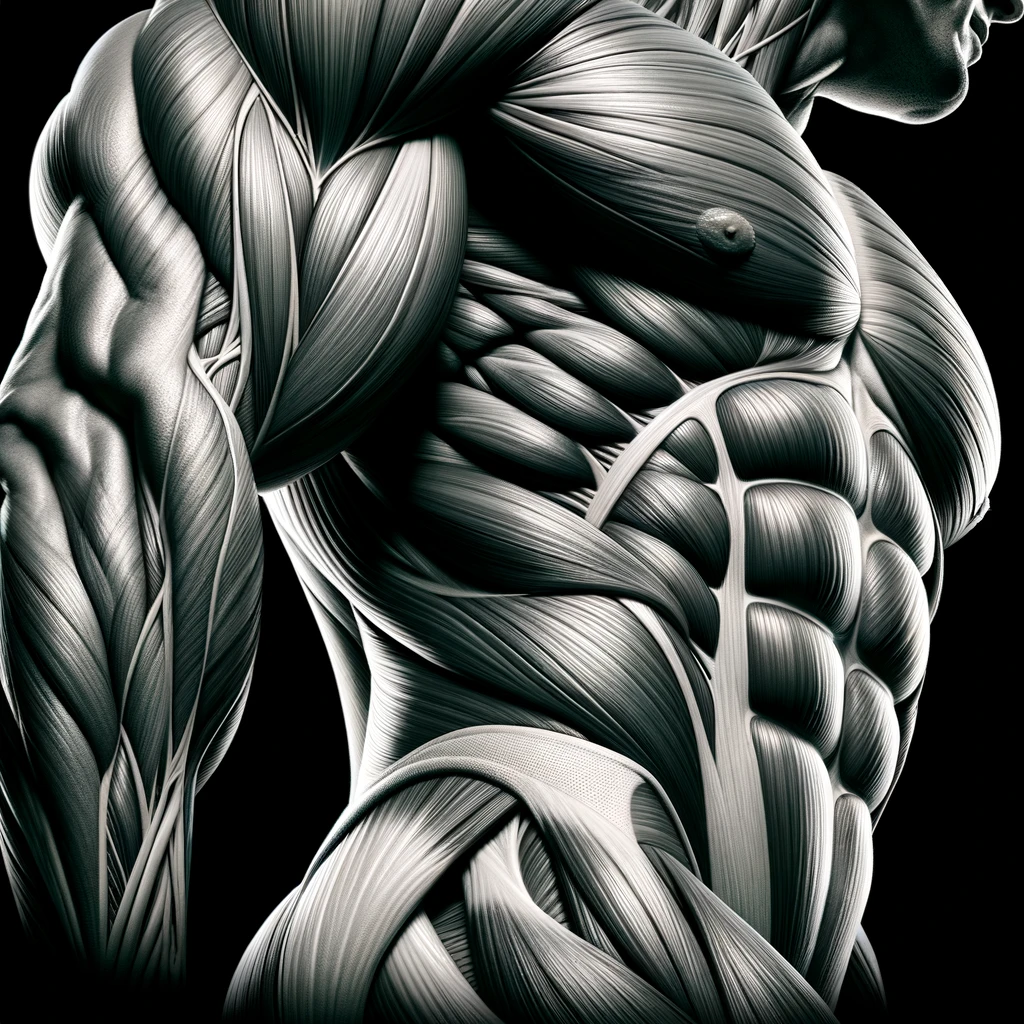Breakdown Of The Forgotten Serratus Muscle
Like the TVA, most have never heard of the Serratus Anterior Muscle. Located on each side of your ribs, below the shoulder blades. It is the most powerful protractor of the scapula. The serratus is divided into 3 parts: the superior, intermediate, and inferior. However, that doesn’t matter and usually, movements that train the serratus will train the entire muscle.
Function
The serratus originates from the upper ribs and inserts into the scapula. It plays a critical role in stabilizing the scapula whenever we move our shoulders up or outwards. For example during pushups, overhead presses, and punches. Additionally, it’s primarily responsible for pulling the scapula forward (protraction), upward rotation of the scapula (like during overhead pressing movements), and overall stabilization of the scapula. The serratus anterior consists of multiple finger-like projections or digitations, giving it a serrated appearance.

A Forgotten Muscle
The serratus is often overlooked as it’s a smaller and less appealing muscle to most lifters. However, this muscle gives a sharp look to those to have toned it. Because of its cut and rigged look, it can look very aesthetic on an already impressive physique. Unfortunately, it’s rarely talked about and there are a few explanations for this.
Firstly, the queue “shoulders up and back” causes the serratus to shut off. While this is a useful queue for exercises like the bench press and bicep curls, too much engagement in these exercises neglects the serratus.
You see, a lot of exercises in the gym place your shoulders in a locked position not allowing them to move freely (ie, the bench press) and over time the serratus begins to become weak and even dormant. When the serratus doesn’t activate properly it forces other muscles to take over and do an inferior job. This leads to a forward slumped posture, winged scapula, and leaving the rotator cuff more prone to injury. When the scapula becomes dormant, this condition is known as winging of the scapula. Google a picture and you’ll see what I mean!
Engaging The Serratus
Luckily, the serratus is an easy muscle to train and usually pretty fun too. Any scapular stabilization exercises (Serratus Punches), all scapular protraction exercises (Scap Pushups), and overhead stability movements. As previously mentioned, overhead pressing movements activate the serratus to a high degree.
Now you don’t need to add a bunch of serratus isolation exercises to your routine. But by choosing compound movements that target the serratus and using proper biomechanics you can easily turn this muscle on. You’ll find that combat sports athletes usually have great serratus muscles, and this is because of the protraction function. At the end of a punch, combat sports athletes can gain a few extra inches of reach by protracting the scapula. So this leads to a great development of the serratus.
Calisthenics athletes usually have good serratus development as they perform numerous movements that require shoulder stabilization. And most lifters have a good deal of development as well so how can you tell if your serratus needs work? Well, that depends, ask yourself if you have been performing any of the exercises I’ve mentioned, and if not, then there are plenty of other compound movements that activate it. While your serratus is likely not weak or dormant, If you have scapular winging then I would look into it. Other than that, use the information you’ve learned and choose some exercises that do. If you want an in-depth guide on how to maximally train this shark-gilled muscle, consider checking out my other guides.

